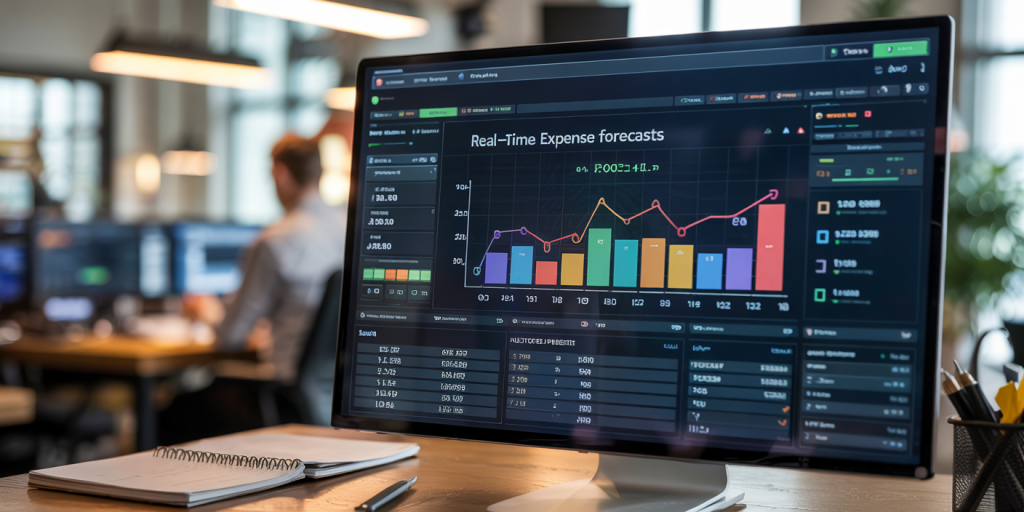How to Use Automatic Spreadsheets to Forecast Future Expenses
In today’s fast-paced financial landscape, accurate forecasting of future expenses has become an essential skill for businesses and individuals alike. With the exponential growth of data and advancements in technology, traditional manual budgeting methods are increasingly insufficient. Automatic spreadsheets have emerged as a powerful tool to streamline the forecasting process, enabling users to make informed financial decisions based on dynamic data models.

Automatic spreadsheets leverage formulas, macros, and data connections to continuously update and predict expenses, reducing human error and enhancing the precision of projections. According to a report by Gartner, organizations utilizing automated financial forecasting tools experienced a 20% improvement in budgeting accuracy and a 30% reduction in forecasting time. This article will walk you through the practical applications of automatic spreadsheets to forecast future expenses effectively, employing real-world examples and comparative insights to help you optimize your financial planning.
Understanding Automatic Spreadsheets: What They Are and How They Work
Automatic spreadsheets are spreadsheets equipped with functions, macros, or scripts that automate data processing tasks. Unlike static spreadsheets where data entries are manually inputted and updated, automatic spreadsheets connect to external data sources or formulas that refresh values autonomously. These can include pulling in sales data, expense reports, or even integrating with APIs to get currency exchange rates and inflation adjustments.
For instance, a medium-sized retail business using Microsoft Excel or Google Sheets might link their expense sheet to a cloud-based inventory system. When new purchase orders are recorded, the spreadsheet updates automatically, recalculating future expenses based on historical purchasing trends. This eliminates the need for manual data entry and reduces the chances of errors that may arise with human intervention.
Automatic spreadsheets typically utilize features such as dynamic tables, pivot tables, conditional formatting, and scripting languages like VBA (Visual Basic for Applications) or Google Apps Script. This functionality enables the automation of complex calculations, allowing users to generate rolling forecasts that account for seasonal variations, supplier price changes, and other factors impacting expenses over time.

Setting Up Your Automatic Spreadsheet for Expense Forecasting
The first step in leveraging automatic spreadsheets for forecasting is to design a robust structure that accommodates your expense categories and forecast horizon. Start by categorizing your expenses logically—fixed costs such as rent and salaries on one side, variable costs like utilities, raw materials, and marketing campaigns on another. This separation helps in applying forecast models more accurately.
For example, let’s consider a SaaS company forecasting its expenses for the next 12 months. Fixed costs like office rent, server maintenance fees, and salaried employees’ wages remain relatively constant, while variable costs such as cloud usage fees, customer acquisition costs, and third-party software subscriptions fluctuate monthly. By inputting historical data from the previous 2-3 years, the spreadsheet can use functions like `FORECAST.LINEAR` in Excel or `FORECAST` in Google Sheets to project future values.
To automate this process, you can use the `IMPORTDATA` or `IMPORTXML` functions to pull live data from online sources like tax rate changes or currency conversion databases, which directly influence expense forecasts. Programming scripts can periodically run to update these inputs and re-trigger forecast calculations, ensuring your spreadsheet is constantly synchronized with real-world variables.
Additionally, setting up error-checking formulas and data validation rules prevents anomalies and maintains data integrity. Conditional formatting can flag expenses exceeding budget thresholds, prompting timely reviews and adjustments.
Practical Techniques for Accurate Forecasting Using Automation
Automated forecasting relies heavily on statistical methods and trend analysis embedded in spreadsheet functions. One of the most accessible techniques is linear regression, which identifies relationships between time (months, quarters) and expense values. However, more sophisticated forecasting requires the use of moving averages, exponential smoothing, or seasonal decomposition to recognize patterns and fluctuations.
Consider a manufacturing firm dealing with seasonal sales cycles affecting production costs. An automatic spreadsheet equipped with exponential smoothing formulas (`ETS` functions in Excel) can adjust expense forecasts based on identified seasonality. This method reduces mistakes common with naive forecasting approaches which assume static growth rates.
Different automation tools like Power Query in Excel enable the aggregation and cleansing of large datasets before feeding them into forecasting models. Using these tools increases forecast accuracy by working only with reliable data sets formatted consistently.
Below is a comparative table summarizing popular forecasting functions and their advantages:
| Forecasting Function | Description | Best Use Case | Complexity Level |
|---|---|---|---|
| `FORECAST.LINEAR` | Predicts future values using linear regression | Simple trends without seasonality | Low |
| `ETS` (Exponential Smoothing) | Accounts for trends and seasonality | Seasonal and irregular expense cycles | Medium |
| Moving Average | Averages data points to smooth fluctuations | Short-term trend identification | Low |
| Custom VBA Scripts | Customizable forecasting models | Advanced automatic forecasting | High |
Employing the proper function depends on the nature of your data and forecasting needs. Combining these functions with data automation creates a robust forecasting framework that continuously evolves with new inputs.
Real-World Case Studies Showcasing Success
Several businesses and financial teams have demonstrated substantial gains using automatic spreadsheets for expense forecasting. Take, for example, a European non-profit organization managing donor funds and grants. By implementing automatic spreadsheets linked to expense tracking and grant disbursement records, they increased their forecasting accuracy from 70% to 92% within a year. This improved accuracy empowered better resource allocation and compliance with financial regulations.
In another case, a logistics company integrated Google Sheets with their internal fleet management software. They used custom scripts to extract fuel consumption records and maintenance expenses directly into their forecasting spreadsheet. This automation reduced the forecasting process time from three days to under two hours monthly, while also lowering budget overruns by 15%.
These cases highlight a shared set of practices: Integration of multiple data sources for comprehensive input. Use of automation to minimize manual errors. Periodic review based on forecast deviations and actuals to enhance model precision.
Tips to Optimize Spreadsheets for Scalability and Flexibility
As expense data volumes grow, spreadsheets can become slower and more complex. To handle this, it’s essential to optimize your automatic spreadsheets for scalability. Use defined named ranges instead of entire columns for calculations, which significantly improves processing speed. Avoid volatile formulas (like `NOW()` or `RAND()`) where not needed, as they trigger unnecessary recalculations.
Moreover, organizing data into separate tabs or linked workbooks enhances clarity and allows parallel team members to work without conflicts. For instance, segregate raw data, intermediate calculations, and final forecasting output across different sheets with restricted editing permissions.
Using array formulas and leverage newer Google Sheets features such as `ARRAYFORMULA` or `QUERY` can consolidate large data processing tasks into concise formulas, streamlining maintenance. Embedding dynamic charts and dashboards linked to your forecast outputs also aids stakeholder communication and decision-making.
Here’s a comparison of some key optimization strategies:
| Optimization Technique | Benefit | Recommended For |
|---|---|---|
| Named Ranges | Faster calculations, easier updates | Medium to large datasets |
| Modular Worksheet Design | Collaborative work, reduced errors | Teams with multiple users |
| Array Formulas and Queries | Simplified formula management | Complex datasets requiring frequent updates |
| Dashboard Integration | Visual insight, stakeholder buy-in | Presentations and reporting |
Regularly auditing spreadsheet performance and cleaning obsolete data ensures sustained efficiency as your forecasting needs expand.
Future Perspectives: The Evolution of Expense Forecasting with Automation
The future of expense forecasting is closely intertwined with developments in artificial intelligence (AI), machine learning (ML), and cloud automation. Spreadsheets will increasingly incorporate AI-powered predictive models that learn from vast datasets to enhance accuracy and detect anomaly patterns without human oversight.

Platforms such as Microsoft Excel now offer integrated AI features, including ‘Ideas’ and predictive analytics that suggest forecast improvements or spot inconsistencies. Google Sheets is also advancing its capabilities with enhanced scripting APIs and third-party add-ons for real-time data analytics.
Looking ahead, automatic spreadsheets are expected to become central hubs in hybrid ecosystems combining ERP systems, accounting software, and external data feeds. This will enable near real-time forecasting, allowing businesses to react proactively to market changes and internal operational shifts.
Research by Deloitte predicts that by 2026, 85% of mid-to-large enterprises will deploy AI-assisted forecasting tools, a significant leap from 30% in 2022. This shift underscores the imperative for financial professionals and individuals to acquire skills in automated spreadsheet design, scripting, and data integration.
Additionally, developments in blockchain technology suggest future automatic spreadsheets could incorporate decentralized verification of expense data, enhancing transparency and trustworthiness for auditors and stakeholders.
Ultimately, mastering automatic spreadsheets today positions users to thrive in an increasingly data-driven financial environment, boosting predictive power and decision-support capabilities.
—
This comprehensive guide has provided practical insights on leveraging automatic spreadsheets to forecast future expenses with accuracy and efficiency. By integrating automation, statistical methods, and data optimization, you can transform your expense forecasting process into a dynamic, scalable, and strategic function that supports sustainable financial decision-making.
